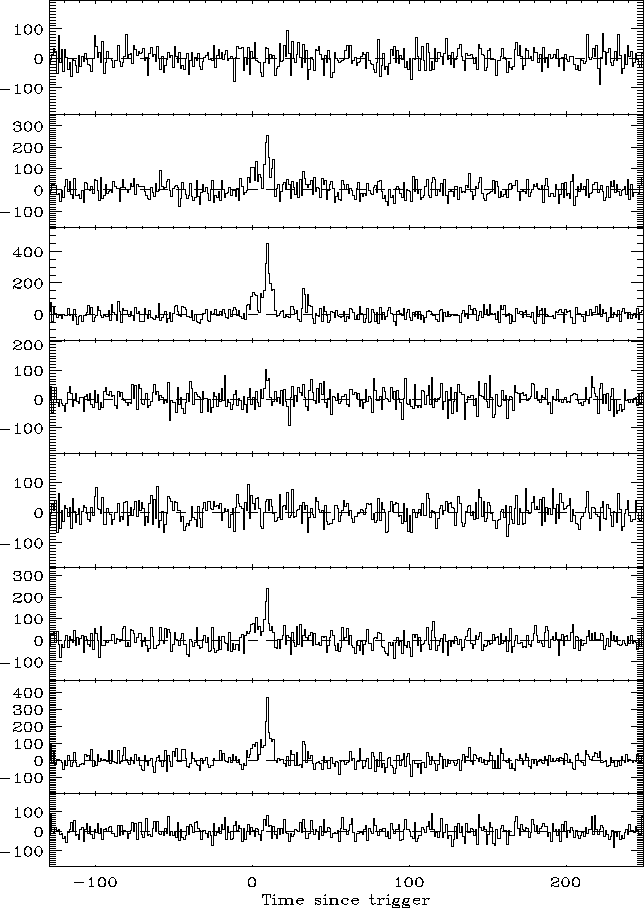 |
 |
The identification of a spike is based on the following criterium:
when the net signal, i.e. the background subtracted counts for a
given 1 s bin, is at least 5![]() significant in the GRBM band
(40-700 keV), and the corresponding AC (
significant in the GRBM band
(40-700 keV), and the corresponding AC (![]() 100 keV) background
subtracted counts are lower than
100 keV) background
subtracted counts are lower than ![]() times the GRBM counts
(see the HR condition expressed by eq.
times the GRBM counts
(see the HR condition expressed by eq. ![[*]](crossref.png) ), the GRBM
counts are thought to be due to a phosphorescence spike, and not
to the GRB. Whenever this condition triggers a spike in the
GRBM band light curve, it changes the corresponding background
subtracted light curve, by replacing the spike counts with the
average value of the two adjacent 1 s bins.
), the GRBM
counts are thought to be due to a phosphorescence spike, and not
to the GRB. Whenever this condition triggers a spike in the
GRBM band light curve, it changes the corresponding background
subtracted light curve, by replacing the spike counts with the
average value of the two adjacent 1 s bins.
A nice example of this spikes' replacement procedure is shown in
the above example of GRB000830: from fig. ![[*]](crossref.png) ,
in GRBM unit 4 there is a spike preceeding the GRB by
,
in GRBM unit 4 there is a spike preceeding the GRB by ![]() s,
whose SNR is around 60
s,
whose SNR is around 60![]() , while in the AC 4 light curve no
corresponding significant signal is visible.
According to this procedure, the spike disappears in the
corrected light curves shown in fig.
, while in the AC 4 light curve no
corresponding significant signal is visible.
According to this procedure, the spike disappears in the
corrected light curves shown in fig. ![[*]](crossref.png) .
.
When the HTR light curves are also available, the background fit results obtained from 1 s light curves are assumed, to subtract the background level from the 7.8125 ms light curves.